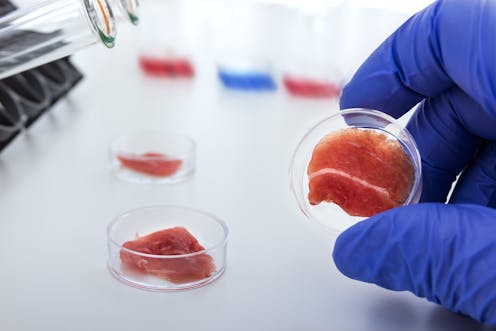It is safe to say we all hate mosquitoes. Unlike virtually any other insect, there are no friends lovers of mosquitoes. However, there is information which could pursued one to not wish to completely eradicate them. Although pests and even deadly to humans, certain plants and animals utilize mosquitoes for survival. That being said, I believe funding and research should be increased in this area especially for the purpose of eliminating the mosquitoes which are vectors for disease.
Tuesday, April 30, 2019
The Only Bad Thing About Summer
An article was published by Science Daily, which summarizes a research study where a discovery was made which could save thousands of lives. The study was conducted by a team of researchers from the University of Arizona led by Jun Isoe. The report was published in PLoS Biology January 8th 2019. During this study, the researchers searched for genes which were exclusive to mosquitoes. To execute this task they utilized a technique known as bioinformatics. Through this process they discovered proteins which were unique to only mosquitoes. This was a crucial discovery due to the current pesticides on the market being non specific and killing off beneficial insects such as honey bees. 40 proteins were discovered, however only one contained the capability of effecting reproduction. They named this protein Eggshell Organizing Factor 1 (EOF-1). The name stemmed from its function during eggshell synthesis. RNA interference was used as a means of inhibiting this protein function which led to a unsuccessful eggshell formation resulting in death of the embryo. After further testing it was confirmed that the creation of a drug which targets EOF-1, would be an effective pesticide which could prevent the occurrence of diseases spread by mosquitoes.
CRISPR
Imagine, curing a fatal disease before birth. In an article form Science Daily a research shows that the gene
editing tool CRISPR is helping make this possible. Using an animal model, a
team at the Children’s Hospital of Philadelphia has managed to out play a
lethal lung disease which causes death hours after birth. The team is hoping to
solve congenital diseases like cystic fibrosis. Using precisely timed in utero
delivery of the CRISPR reagents into the amniotic fluid during the fetal
development they were able to target changes in the lungs of mice. They
introduced the gene editors four days before birth, which would be the third
trimester for humans. In a second experiment they were able to reduce the
severity of a lung disease known as surfactant protein C deficiency or SFTPC,
which has a common disease causing mutation in the human SFTPC gene. 100% of
the untreated mice died of respiratory failure within hours of birth. However,
the treated mice showed a 22% survival rate. When I think of genetics the
progress we’ve made is barely scratching the surface of the possibilities that
lie ahead. Imagine a world where we don’t have to fear for the health of our
unborn children. Through genetics, a disease free world doesn’t seem like such
a far fetched idea.
Labels:
" "Genes",
"CRISPR",
amniotic fluid,
Gene editing on human embryos,
gene test,
SFTPC,
uterus
Monday, April 29, 2019
Stem Cells from Hair
In this article, a team of researchers at the University of Maryland have discovered that a subtype of stem cells in hair follicles may be able to regenerate myelin sheath. Two groups of stem cells were first identified in the hair follicles and then were separated if they were either coated in glycoprotein CD34 or not. After harvesting the stem cells from mice hair follicles, the two separate stem cell groups were colonized, with the CD34 colony turning into glial cells. The team also discovered that these glial cells can repair myelin sheath when they are placed into mice that have a genetic defect that prevents the mice from forming myelin sheaths.
:max_bytes(150000):strip_icc()/Astrocytes-5a94d1e343a1030037041783.jpg)
:max_bytes(150000):strip_icc()/Astrocytes-5a94d1e343a1030037041783.jpg)
This is an amazing discovery, and I hope that humans possess these same stem cell features in hair follicles. In their study, however, I wonder if the stem cells can actually repair degrading myelin sheaths in patients with Multiple Sclerosis. It seems that they only tested the stem cells in mice who already could not form myelin sheaths, but how would it work in a patient where their myelin sheaths are constantly under attack?
The First Confirmed Hominin Hybrid Has Been Discovered
Denisova 11, as she is called, was an approximately 13-year-old girl who lived around 90,000 years ago in the Altai Mountains of Siberia. What is so fascinating about this girl is that she is clear evidence for interbreeding between species in the genus Homo (humans). She is indeed about half Denisovan and half Neandertal, two early members of the genus that are related to Homo sapiens.
Viviane Slon, a researcher at the Max Planck Institute in Leipzig, Germany, performed DNA analysis six times on Denisova 11's piece of limb bone that had been found. She simply could not believe the results of the analysis the first time and had thought she made a mistake. However, each successive test came to the same conclusion. This young girl had a Neandertal mother and a Denisovan father. Moreover, they discovered that her father in fact had a Neandertal ancestor of his own. This was further confirmation of how common hybridization must have been in early hominins.
So far, only Denisova 11 and four other individuals belonging to the species Homo denisova have been uncovered by the bone fragments that they left behind in a single cave in the Altai Mountain range. As I have previously reported, the species was first identified in 2010, when DNA sequencing of the toe bone of an individual called Denisova 3 led scientists to confirm the existence of an entirely new group of humans.
Svante Pääbo, the director of the Max Planck Institute of Evolutionary Anthropology, has stated that due to the fact that Neandertals originated in western Eurasia and that Denisovans originated in the east, they likely did not meet very often. But based on these latest findings, Pääbo and many other scientists now believe that when the two species did come face to face, mating between them was far more common than was ever previously thought.
The idea that Denisovans, Neandertals, and Homo sapiens were producing hybrids for possibly hundreds of thousands of years is supported by genetic studies of modern populations. The DNA of people living in Europe and Asia today is on average 2% Neandertal. The DNA of people living in Melanesia today is on average 5% Denisovan, with other varying amounts found in the rest of southeast Asia and Oceania.
The genomes of all these humans studied, ancient and modern, reveal that hybrids were not uncommon throughout our shared history on this planet.
slimy mucus 70 percent of currently used anti-infectives were dervived from naturally occuring chemicals .For example amoxicillin is one of the most commonly prescribed antibioics which comes from a chemical that is isolated from Penicillium mold. Many new efforts to identify new anti-infectives have foused on soil microbes. Microbes are all around us and they are very important to us. Microbes play both positive and negative ways like supporting our digestion and reducing pathogenic infections, but they also contributing to some type of diseases.Over 30,000 fish species have been identified to support microbes that may help resist infections. If the slimy mucus thats coats fish acts like a protective coating and protects them from bacteria,fungi and viruses and acts as a physical barrier. hopefully researches find a way to use this slimy coating. heconversation.com/microbes-that-live-in-fishes-slimy-mucus-coating-could-lead-chemists-to-new-antibiotic-drugs-114278
Microbes

Saturday, April 27, 2019
A Newly Found Species is an Extension of the Human Lineage
In an article by Live Sceince, an extinct lineage that lived in New Guinea interbred with modern humans called Homo luzonensis. This new addition to the human family tree was discovered in a cave in the Philippines. This extinct lineage lived on what is now the island of Luzon around 50,000 years ago. Scientists believe that they stood less than three feet tall, making them the smallest out of all the extinct Homo lineages. They had extremely small teeth and had three roots, unlike our teeth which have one root. They also only had one toe bone, unlike the three toes bones we have. This discovery adds new complexity to the story of human evolution. According to Times Magazine, it is possible that there may be many other lineages that are still unknown in New Guinea. This discovery may just be the beginning on the completion of the human lineage. The picture below is the cave where Homo luzonensis was discovered in New Guinea.
New Cancer Treatment Discovered in Endangered Chinese Fir Trees
Science Daily has informed us of the new discovery which was made at Purdue University through the work of organic chemist, Mingji Dai and professor of medicinal chemistry Zhong-Yin Zhang. After the failed attempts to find within the tree a treatment for diabetes and obesity, Mingji and Zhong-Yin started exploring other potential uses. They uncovered that a synthetic analog of the tree’s molecule, named Compound 30, was a strong and effective inhibitor of SHP2. The complete findings were published in the Journal of the American Chemical Society. SHP2 plays a major role in many types of cancer. For this reason it is one of the main focuses with many new cancer fighting drugs. Compound 30 not only reacted with SHP2 but formed a strong covalent bond, making it more effective than most other cancer fighting drugs on the market. Unfortunately Compound 30 alone does not kill cancer directly but when paired with other existing drugs it can greatly enhance the results.
According to the National Cancer Institute, in 2018 over 600,000 people lost the fight against cancer. Those are staggering numbers that should stun us all. Although there are many worthy research projects, I personally feel finding preventative methods and cures for cancer should be at the top of the list. Cancer affects all ages, nationalities and genders, no one is immune. It is a horrible disease with sometimes a more painful treatment plan. I believe preventative medicines and effective treatments exist. It is our responsibility to adjust our focus and finances to ending this tragic statistic from continuing in the same direction.
According to the National Cancer Institute, in 2018 over 600,000 people lost the fight against cancer. Those are staggering numbers that should stun us all. Although there are many worthy research projects, I personally feel finding preventative methods and cures for cancer should be at the top of the list. Cancer affects all ages, nationalities and genders, no one is immune. It is a horrible disease with sometimes a more painful treatment plan. I believe preventative medicines and effective treatments exist. It is our responsibility to adjust our focus and finances to ending this tragic statistic from continuing in the same direction.
Monkeys with Human Brains
Researchers from Kunming Institute of Zoology and the University of North Carolina have successfully edited a human gene, microcephalin (MCPH1) into rhesus monkeys. MCPH1 is linked to brain size, according to this study. The monkeys exposed to this gene experienced what is known as neoteny in humans; to put simply, a slower development process to further develop the brain. On the molecular and microscopic levels, several things were visible to the researchers such as expression delay of neurons, altered cell differentiation, differentiation in synaptic signaling, etc. The only thing the scientists could record that wasn't microscopic was the monkeys expressing better short-term memory and shorter reaction time when compared with their wild type brothers and sisters.

While this study can help us to better understand how certain genes work for the human brain, it also feels like it's opening a door to a science-fiction future. One of the researchers that was a part of this team has even chastised this experiment. Is it ethical to modify the genetics of primates? It could be a very slippery slope to take, and could possibly open the door for a wide variety of issues.

While this study can help us to better understand how certain genes work for the human brain, it also feels like it's opening a door to a science-fiction future. One of the researchers that was a part of this team has even chastised this experiment. Is it ethical to modify the genetics of primates? It could be a very slippery slope to take, and could possibly open the door for a wide variety of issues.
Mutation in MC4R
An article in the New York Times discusses the findings of two studies on mutations on MC4R gene. The findings of the first study indicated genetic alterations which mutes appetite, to be directly linked to diabetes, heart disease and obesity. MC4R gene is a "G protein-coupled receptor whose distribution causes obesity." The second study used the same sample to develop a genetic risk score for obesity. The combined findings of both studies indicated a biological factor playing a role in how much one struggles with their weight. Those people feel hungrier than those who don't gain weight easily. The 20 years research led by Dr. Sadaf Farooqi indicated that people with MC4R mutations tend to be obese, since the mutation prevents the gene from working and sending a signal of fullness. Those people always feel hungry and the risk of " diabetes and heart disease is 50% higher than those without the mutation."
I find those findings very important since obesity and heart diseases are among the top 10 leading causes of death in the US. More in depth understanding of the genetic component to obesity could help as an early indicator for those who are at high risk for obesity. Also later manipulation of the mutation of MC4R if possible can be used to control the genetic component of obesity.
I find those findings very important since obesity and heart diseases are among the top 10 leading causes of death in the US. More in depth understanding of the genetic component to obesity could help as an early indicator for those who are at high risk for obesity. Also later manipulation of the mutation of MC4R if possible can be used to control the genetic component of obesity.
Friday, April 26, 2019
cloning long-dead species
An article published in NewScientist magazine in 2008 illustrates the findings of a study that successfully cloned dead mice. The research team utilized the nucleus from cells and were injected into eggs that'd had the nucleus removed. The fact that the cells utilized were from tissue that had been frozen for over 15 years, woke up the idea that extinct species frozen in permafrost can be "resurrected".
In 2009 a publication in the NatGeo site, pointed the findings of a process where the pyrenean ibex was the first extincted animal to be brought back from extinction, though it died two days after being born, (dead of organisms is common in cloning experiments). This news produced mixed feelings, since it was the first animal to survive de-extinction passed birth but also the first one to be extincted two times.
Like most genetic topics, there is controversy surrounding this one. Opposers say that people should try to find ways of preserving existing species, instead of trying to bring back extincted ones. The truth is, that up to 0.1% of the total species go extinct each year, mostly due to humans. Every species an important part of the ecosystem, and bringing them back will cause mostly a positive impact in the ecosystem they left behind; but it is also true that we have try harder at protecting the species that remain alive.
In 2009 a publication in the NatGeo site, pointed the findings of a process where the pyrenean ibex was the first extincted animal to be brought back from extinction, though it died two days after being born, (dead of organisms is common in cloning experiments). This news produced mixed feelings, since it was the first animal to survive de-extinction passed birth but also the first one to be extincted two times.
Like most genetic topics, there is controversy surrounding this one. Opposers say that people should try to find ways of preserving existing species, instead of trying to bring back extincted ones. The truth is, that up to 0.1% of the total species go extinct each year, mostly due to humans. Every species an important part of the ecosystem, and bringing them back will cause mostly a positive impact in the ecosystem they left behind; but it is also true that we have try harder at protecting the species that remain alive.
Labels:
"cloning",
"genetics",
animal genetics,
animal testing,
clone,
clones,
de-extinction,
Extinct Species
The Genetics of California's Oldest Trees
An article in the San Francisco Chronicle discusses the large multi year project that was conducted to sequence the genomes of the coast redwood and giant sequoia trees, which are some of California's oldest living trees. They are doing this to see which trees are better suited to adapt to a newer, warmer climate, and to see how the trees have adapted over the past years. While sequencing they found that the Coast Redwood is the second largest genome ever sequenced, with about 27 billion base pairs with 9 times the size of the human genome. Now that they have sequenced the genome they plan to observe which genetic traits perform better than others so that they can compile a sort of map for the future conservation of the different species in those areas. Researchers also find this work to be important as about 95% of California's old growth has been wiped out, so there is not much that genetically remains of the different types of species in these areas.
I think that this article is rather interesting because trees are some of the oldest living organisms on the planet so I think it would be very beneficial to learn all that we can from their genetics while we still can. I also think it was fascinating to learn that almost 95% of the California’s old plant life is nearly gone, which sort of makes it even more imperative that we start to make more progress towards learning about, and conserving them to the best of our current abilities.
The Mystery of Height
In an article from The International Journal of Science, Nature, suggests that ones gene for height has long been hidden until now. The gene for height has long since plagued geneticists causing them to question everything we know about genetics because theories were not linking to discovery at all. In order to find the gene scientists turned to Genome-Wide Association Studies (GWAS) in order to scour a larger variety of SNPs. A team led by Peter Visscher performed a complete readout of 6 million bases out of 21,620 people and were able to find genetic differences in 1 out of 500 people determining that height is 79% hereditary.
I think this article is very interesting being that we are still uncertain the full extent of genetics based height. I am interested to see as the studies continue if we can find an isolated gene that will be able to determine height. Height is a bit of an interesting study in my family being that none of us are relatively similar heights.
I think this article is very interesting being that we are still uncertain the full extent of genetics based height. I am interested to see as the studies continue if we can find an isolated gene that will be able to determine height. Height is a bit of an interesting study in my family being that none of us are relatively similar heights.
Alzheimer's blood protein. Years before Symptoms of Alzheimer's disease manifest itself changes happen in the brain, neurons slowly start to degrade.Scientists at the German Center for (DZNE).neurodegenerative disease.have know shown that a protein found in blood can be used to precisely monitor the progression of the disease before the first clinical signs appear.These finding is a big deal because Alzheimer's disease still no cure or a really effective treatments. They only treatment are pills that can slow down the progression. My mother in Law has been suffering for the past 11 years and is now in the finally stage and she has been living with us. A blood is better suited than brain scans. These blood test are based on amyloid proteins. In Alzheimer's disease these amyloid proteins accumulate in the brain and occur in the blood. This shows the death of the neurons.When the brain cells die their remains can be detected in the blood.

Allelic Drive
A new CRISPR technology is creating an allelic drive according to Science Daily. It has gRNA which is a guide RNA that locates undesired gene variants that CRISPR can cut and replace with desired version of the gene. This application makes it much easier for scientists to modify populations. The allelic drive allows letter by letter replacement instead of whole sections. It is mostly used in agriculture currently but it will be used on disease carrying insects. Eventually allelic drive will be used to study human disease and hopefully aid in cures of diseases.
I think with rise of outbreaks of human diseases that could be kept down with vaccinations that people choose to deny, it could allow the human population to eliminate diseases without having to use a vaccine. So many people are straying from vaccines which is not helpful for the population.

I think with rise of outbreaks of human diseases that could be kept down with vaccinations that people choose to deny, it could allow the human population to eliminate diseases without having to use a vaccine. So many people are straying from vaccines which is not helpful for the population.
The Bigger the Nostril, the Hotter the Air
It has been found through a study by a team of scientists from Pennsylvania State University that the shape of one’s nostril may share a relationship with the climate of the region that that person’s ancestors descended from. While noses are used for smelling, they are also used to warm and humidify the air that we breathe. It had been found that the more narrow the nostril, the more efficient the nose would be at warming and humidifying the air. Thus, people that descend from colder climates have more narrow nostrils, as they need noses that are more efficient at warming the cold air, and people that descend from warmer climates have wider nostrils, as they do not need noses that are as efficient at warming the already-warm air. It is stated, however, that the climates of past ancestors’ regions are not deciding factors on nose width; other genes may come into play that affect the shape of one’s nose.

I love studies that center around the morphology of humans, so of course I was very interested reading this article. Reading articles that center around humans evolving to have advantageous traits is so interesting to me because I love to think that there are some humans out there that for some reason have higher-functioning noses than I do. It intrigues me that a larger-nostriled friend might have an easier time breathing in the Canadian wilderness than I would, simply because of the morphology of their nose. The study does make sense, anyhow, that humans in colder regions would evolve to breathe easier, and humans in warmer climates would evolve as to not have noses that are too efficient at heating already-warm air. It makes sense that someone like myself, who descends from a tropical country like the Philippines, has such large nostrils.
Thursday, April 25, 2019
Preparing for a Future of Gene-Edited Babied
This is what the future holds and I think that there are some pros and cons to it. One of the pros is being able to remove genetic disorders and inherited diseases such as Alzheimers, Huntington's, or predisposition heart diseases. In the future and long term, the human race will be conceived in a laboratory and could possibly have no variation.
At the Children’s Hospital of
Philadelphia (CHOP) and Penn Medicine, a team of individuals have managed to
edit the genes in mice to stop several lethal lung diseases at birth. In one of
their experiments, they were able to reduce the severity of surfactant protein
C deficiency and increase the chance of survival when being born from zero percent
to 22 percent. The gene editing occurs via CRISPR technology and is delivered
to the fetus via amniotic fluid. The genes were edited four days prior to the
birth of the mice, which is equivalent to the third trimester in humans. The team
of doctors is specifically looking into the use of in utero gene editing for another disease as well, such as cystic fibrosis and alpha-1 antitrypsin.

It’s amazing that a team of
individuals has figured out how to manipulate a gene to increase a child’s
chance for survival. However, the question must be asked, what else does this
open the door for? While this technology can save lives, will it also open the
door for people to edit their children in the exact type of babies they want?
The Genetics Behind Height
In an article published in Nature researchers discuss the genetics behind individuals heights, and what genetics processes might be responsible for its inheritance. What researchers know from sequencing the human genome about 20 years ago was that about 80% of a person's height is determined from the genes, but they are still unsure of what parts specifically are responsible for this. Several studies that attempted to find the variations responsible for height were only able to find little changes rather than a significant chuck, which led many to believe that there may have been something wrong with our knowledge of genetics. Researchers continues to look into what they called the missing heritability for height, and what was found was that though using processes like Genome-Wide Association Studies (GWAS) to search for rare SNPs that aren’t commonly studies in GWAS, and found that these are most likely where the genetics of height lies. These researchers sequences about 6 billion bases between 21, 620 people and found that what was previously believed about the genetics of height was actually rather true, that the heritability of height was about 70%.
I think this article is rather interesting because I feel like it is such common knowledge that your height is an inherited trait that you get from your family, but while that's true it is a much more complicated genetic process than many people know. I know for my family the genetic inheritance of height is rather obvious as none of us are over 5’8”. I also think that it’s fascinating that we really don’t know that much about the specifics about how exactly height is genetically passed down.
DNA with 4 extra letters Scientist have recently molded a new kind of DNA into its elegant double helix structure and found that it had properties that could support life. Scientist called this new DNA "hatimoji" meaning 8 letters in Japanese.This new DNA has a much greater capacity to store more information.The four new synthetically nucleotide bases : P,B,Z and S in addition to the four natural bases. In addition these new DNA strands must be able to twist into the same three dimensional structure the famed double helix. After Scientist conducted tests they found that these structures do indeed formed the classic double helix.There was one more step its need to be self sustaining and have the ability to survive on there own. Hopefully one day scientist can improve the accuracy and efficiency of replication and transcription into RNA. 

Wednesday, April 24, 2019
Would you like a banana?
Or in this case soil? In most species the makeup of the gut is determined by genetics. However, a recent study shows that this is not true for baboons. Previously, studies have shown that the baboons' microbiota differs across populations. Researchers started to question whether this was caused by genes shared with relatives, the distance between populations or possibly the environment. How did they conduct their analysis? Well they had the dirty job of collecting poop from 14 different baboon populations all across Kenya. Not only did they collect their poop they analyzed it along with looking at 13 different characteristics of the environment of where it was collected.
As it turns out, soil has the greatest impact on the makeup of the baboons' guts. It predicted the differences of the microbiota in different populations three times better than the distance in between the populations and a whopping 15 times better than genetics. This is fascinating because it brings a whole new meaning to "you are what you eat". I didn't realize how much soil baboons consume until realizing that a lot of the leaves, fruits, seeds and insects they eat are either covering in a dusting of soil or are straight off the ground.
As it turns out, soil has the greatest impact on the makeup of the baboons' guts. It predicted the differences of the microbiota in different populations three times better than the distance in between the populations and a whopping 15 times better than genetics. This is fascinating because it brings a whole new meaning to "you are what you eat". I didn't realize how much soil baboons consume until realizing that a lot of the leaves, fruits, seeds and insects they eat are either covering in a dusting of soil or are straight off the ground.
The Origins of the Stonehenge Builders
Across Britain's many Neolithic archaeological sites, researchers have extracted DNA and compared it with Neolithic DNA throughout Europe. They were able to determine that the humans inhabiting Britain at the time descended from people in what is now Turkey. There was a great migration in 6000 BC, with people migrating up into Eurasia, and others moving along the Mediterranean. Genetic evidence shows that the Mediterranean group were the British settlers, arriving in 4000 BC. They would have encountered native hunter gatherers on the island, whose population went into steep decline after their arrival. Genetic analysis has shown no mingling between the two groups.
The Neolithic farmers were well equipped to survive in Britain, and quickly outnumbered the hunter gatherers, likely due to agriculture. They are also believed to have introduced the practice of building megaliths such as Stonehenge. However, they were practically wiped out as well in 2450 BC when another migrant group from Europe displaced them.
I find it interesting that there were two big genetic shifts in the population over only a few thousand years. Since Britain is an island, these genetic changes were more drastic. While the Neolithic farmers had brown skin and brown eyes, later immigrants like the Beaker Folk and Anglo-Saxons had paler skin which is now predominant.
The Neolithic farmers were well equipped to survive in Britain, and quickly outnumbered the hunter gatherers, likely due to agriculture. They are also believed to have introduced the practice of building megaliths such as Stonehenge. However, they were practically wiped out as well in 2450 BC when another migrant group from Europe displaced them.
I find it interesting that there were two big genetic shifts in the population over only a few thousand years. Since Britain is an island, these genetic changes were more drastic. While the Neolithic farmers had brown skin and brown eyes, later immigrants like the Beaker Folk and Anglo-Saxons had paler skin which is now predominant.
Superbugs are known as Gram negative bacteria that are causing a global health crisis.According to the Centers for Disease Control at least 2 million people contract and antibotic resistance infection. because there are no antibiotics for some gram negative infections, Kahne says that "learning how the outer membrane is assembled and how to interfer with assembly has major medical implications". Within the cytoplasm the molecule ATP provided enough energy to produce the LPS building blocks and move them around the cell.Therefore the more that scientist know how gram-negative bacteria build there outer membrane the closer they will get to dismantling there defense.

Human Gene for Large Brain Inserted into Macaque Monkeys
In an attempt to better understand the evolution of the human brain, researchers in China successfully transplanted a human gene for larger brain size into macaque monkeys. They used CRISPR technology to insert the human microcephalin gene into monkey embryos. Of the eleven monkey embryos that successfully received the gene, only five survived. The brain sizes did not increase, although they did take longer to develop, as in humans; the monkeys also performed significantly better on a memory test.
This type of experiment could not take place in the West because there are restrictions when working on intelligent animals due to ethical reasons. Western scientists in the article described how giving an ape more intelligence is cruel because it would be above all apes, but below all humans, giving it no meaningful existence.
Even though I love to see advancement in our understanding of human evolution, I believe that there is an ethical dilemma to altering the brain of an intelligent animal. There are other ways of furthering our knowledge of evolution, through archaeology, anthropology, and geology, to name a few.
This type of experiment could not take place in the West because there are restrictions when working on intelligent animals due to ethical reasons. Western scientists in the article described how giving an ape more intelligence is cruel because it would be above all apes, but below all humans, giving it no meaningful existence.
Even though I love to see advancement in our understanding of human evolution, I believe that there is an ethical dilemma to altering the brain of an intelligent animal. There are other ways of furthering our knowledge of evolution, through archaeology, anthropology, and geology, to name a few.
CRISPR - Produced Produce Coming Soon to Grocery Stores
In genetic engineering, the rise of CRISPR technology has led to numerous breakthroughs in editing DNA sequences. With CRISPR sequences, they are able to cut out fragments of DNA with the help of the Cas9 enzyme. The gene editing capabilities mean this tool can be useful for a variety of problems, including genetic disorders. However, Jennifer Doudna, one of CRISPR's creators, one of CRISPR's creators, believes the biggest impact will be in the food industry.
Her reasoning is that the CRISPR method is faster and cheaper than current methods, including GMO's. The CRISPR tool allows one to be more precise when editing DNA, which saves time and money. Corporations like Monsanto are heavily funding the advancement of research in this technology, and Jennifer Doudna predicts we will see CRISPR modified produce in stores within five years. Many startups have arisen as well with the goal of producing meat using CRISPR. It could be created using the DNA from a cell, meaning no animals would be killed.
As far as regulations, there should not be many obstacles. The USDA decided that in any circumstance in which the DNA editing could have been done using traditional methods, no extra regulations are required.
I am a proponent of this technology for the reasons stated, as well as the environmental benefits of replacing livestock with synthetic meats. It could help to prevent deforestation as less farms will be needed. Fewer ecosystems would be destroyed and replaced with corn monoculture.
Her reasoning is that the CRISPR method is faster and cheaper than current methods, including GMO's. The CRISPR tool allows one to be more precise when editing DNA, which saves time and money. Corporations like Monsanto are heavily funding the advancement of research in this technology, and Jennifer Doudna predicts we will see CRISPR modified produce in stores within five years. Many startups have arisen as well with the goal of producing meat using CRISPR. It could be created using the DNA from a cell, meaning no animals would be killed.
As far as regulations, there should not be many obstacles. The USDA decided that in any circumstance in which the DNA editing could have been done using traditional methods, no extra regulations are required.
I am a proponent of this technology for the reasons stated, as well as the environmental benefits of replacing livestock with synthetic meats. It could help to prevent deforestation as less farms will be needed. Fewer ecosystems would be destroyed and replaced with corn monoculture.
Fish brains and Alzheimers
Researchers at the German Center for Neurodegenerative Diseases and the Technische Universitat Dresden are looking at zebra-fish in hopes to shed light on some Alzheimer treatments. An article from ScienceDaily is reporting that by looking at the zebra-fish, and specifically the amyloid-b aggregates we can see how we can regenerate brain tissue. Because zebra-fish are able to regenerate tissue much better than humans the researchers are hoping that we can translate that over to mammals and eventually humans and regenerate brain cells.
When the researchers were studying the zebra-fish they challenged the brains with toxic amyloid-b, which is characteristic of Alzheimers, and some of the populations of fish increased proliferation and produced new cells. They also noted that the molecular programs of each cell population changed in response to the amyloid. The next step is to now try and identify the genes that can start such a regeneration. After that they need to try and find the mammalian equivalents which will take even more work. They are hopeful that this can lead to a new and better approach to Alzheimer's
in humans.
When the researchers were studying the zebra-fish they challenged the brains with toxic amyloid-b, which is characteristic of Alzheimers, and some of the populations of fish increased proliferation and produced new cells. They also noted that the molecular programs of each cell population changed in response to the amyloid. The next step is to now try and identify the genes that can start such a regeneration. After that they need to try and find the mammalian equivalents which will take even more work. They are hopeful that this can lead to a new and better approach to Alzheimer's
in humans.
Tuesday, April 23, 2019
Flesh eating bacteria
Flesh eating Bacteria
In an article written by Rachael Rettner, she talks about a recent study on a bacteria called A streptococcus flesh eating bacteria. The researchers have found the bacteria survival is aided by special proteins called transporters which help feed the microbes in the muscle tissue. These disease are rare but deadly, causing death in up to one third of patients who develop the disease, this is a large perecent. These researchers uses a technique that allowed to deactivate the bacteria genes one by one.They found that, out of the bacteria 1,800 genes 72 genes were key to its survival in necrotizing myositis. The bacteria that's lives in our body is very different from this bacteria.For example the bacteria use to survive in people with strep throat are very different from those that are used for infections in muscles.

Evolution within the Diving Bajau People
It has been found that the Bajau people, who reside in scattered communities in Indonesia, Malaysia, and the Philippines, may have evolved traits that make them better divers. The Bajau people dive for their livelihood, and have been doing so for centuries. Many have noticed that the Bajau people are more gifted than others in diving, as the Bajau people were observed to be able to dive more than 200 feet with their only equipment being wooden goggles. Dr. Melissa Ilardo, a geneticist, set out to study the people to see if they had, indeed, evolved traits that could aid them in diving. She visited the villages of the Bajau people and measured the size of their spleens, which have been found to play a key role in how deep an organism is able to dive. The larger the spleen, the deeper an organism is able to dive. Dr. Ilardo measured the spleens of nearby farmers that were not Bajau, and she compared the sizes to the Bajau people. She found that the spleens of the Bajau people were 50% larger than the spleens of the neighboring farmers. After conducting a DNA test, it was also found that the Bajau people shared a number of variant genes, which further suggested that natural selection had taken place within the population. A variant of a gene, PDE10A, was found within the DNA of the Bajau people; this variant influences the size of spleens. The more copies one has of the PDE10A variant, the larger that person’s spleen will be. The studies performed are not conclusive, however, and more research needs to be performed on the matter.

I found this article to be really interesting. The evolution between groups of people intrigues me, as it sounds amazing that a certain group of people can evolve to have a set of traits from other humans that help them survive better under certain conditions. It seems that, compared to humans like me, who live in a more neutral environment, it is as if the Bajau people have a biological advantage. The fact that the Bajau people are able to dive to depths of over 200ft, and at that rate, are able to hold their breath for long enough to dive that far down, shows how far the limits are that the human body can be pushed to. I also found it very heartwarming that the researcher who was performing the studies had such love for her research, and was so passionate as to travel all the way to the islands that the Bajau people live on in order to perform tests. Reading about how interesting the evolution of the Bajau people was, and how much Dr. Ilado loved her job, it made me imagine how fun it must be to be a geneticist researching the biological evolution of groups of humans.
Working to Detect the Off-Target Effects of CRISPR
The CRISPR genome editing technology was developed in 2012. It has potential to eventually cure multiple genetic diseases. However, there are still some unknown aspects of this technology. Scientists have not been able to consistently identify off-target effects in "theurputicallly relevant cell types". This is what is keeping CRISPR from moving to the clinic. An article by Science Daily writes that Gladstone Institutes have developed a method to distinguish these off-target effects. When CRISPR cuts DNA, the cell recruits different DNA repair factors to that region to fix the break. The goal of the scientists was to find the location of the DNA repair factors in order to identify the sites that have been cut by CRISPR. One specific repair factor, MRE11, is always present in repairing the DNA. Scientists developed "DISCOVER-Seq", which uses MRE11 to identify the precise areas in which the genome has been cut.
I think that DISCOVER-Seq will be very important in moving CRISPR to the clinics. It is crucial that scientists are able to identify and effects on DNA that occur away from the target region. This new technique also uses the cell's natural response to cuts in DNA, so it may be the most accurate method developed thus far.
I think that DISCOVER-Seq will be very important in moving CRISPR to the clinics. It is crucial that scientists are able to identify and effects on DNA that occur away from the target region. This new technique also uses the cell's natural response to cuts in DNA, so it may be the most accurate method developed thus far.
Transferring DNA to Places You've Never Been
It is a common known fact that everywhere you go, you leave
at least a trace amount of your own DNA. However, recent studies completed by
forensic scientists are finding that something as simple as a handshake can
actually spread DNA to places regardless of whether or not one has been there. The
experiment found that after a ten-second handshake (which “is still two to five
times longer than a typical handshake [Saey 3]), the other person’s DNA was
found in objects touched immediately after, one in every fourteen times. The same
concept was tested in a mimic-restaurant style setting and it was found that
despite whether or not someone at the table touched another’s cup, the fact
that their DNA was on the handle of the shared pitcher then effectively
transferred their DNA and every person’s DNA was found on every person’s cup. This
is a huge finding in forensic science and allows scientists to better understand
how the transfer of DNA can majorly effect evidence in crime investigations.
A real-world example of the findings from this experiment
was displayed in a 2012 robbery crime. This is fascinating to me but also
somewhat troubling as there has been a real example of how someone’s DNA can
turn up in places they have never been. Since DNA in crime investigations is
still a relatively new idea, considering it became accepted in the 1990’s, it
is extremely interesting to see the understandings of it still being unraveled and
figured out in ways that will maximize efficiency and minimize mistakes.
appetite mutation
In the New York Times, writer Gina Kolata discusses the new study that might have found a gene sequence that makes people not care much for food. She began her study off the notion that there are some people who just don't fixate over food. Believe it or not there are some people who don't think about their next meal immediately after finishing their current one. The study has found a genetic alteration that suppresses appetite and also reduces their chance for diabetes and heart disease greatly.
The study included half a million people in the UK from the ages of 40-69 who provided DNA samples along with their medical records. During this study, a second study on obesity was conducted and yielded the ability to help predict who is at a high risk of it even in early childhood. The gene is called MC4R and has the ability to destroy satiety which is very alarming. When you eat your body will signal a gene to tell you that you are hungry, but people with the MC4R mutation never get that signal keeping the gene always on and can continue eating which raises their chance for heart disease by 50%.
The gene can also be flipped in the other direction such as the gene being always off. This can be found in roughly 6% of the population and causes the person to always feel full. This is amazing that the gene can just flip causing two very different conditions. I cant imagine not being hungry due to my love for food. It would be interesting to see how we can control this mutation in the future.
Subscribe to:
Posts (Atom)

/https://public-media.si-cdn.com/filer/1b/c4/1bc49446-a2a7-478a-acdc-f6dadd065675/01_bonefragment_denisova11uniofoxford.jpg)










_female.jpg)




